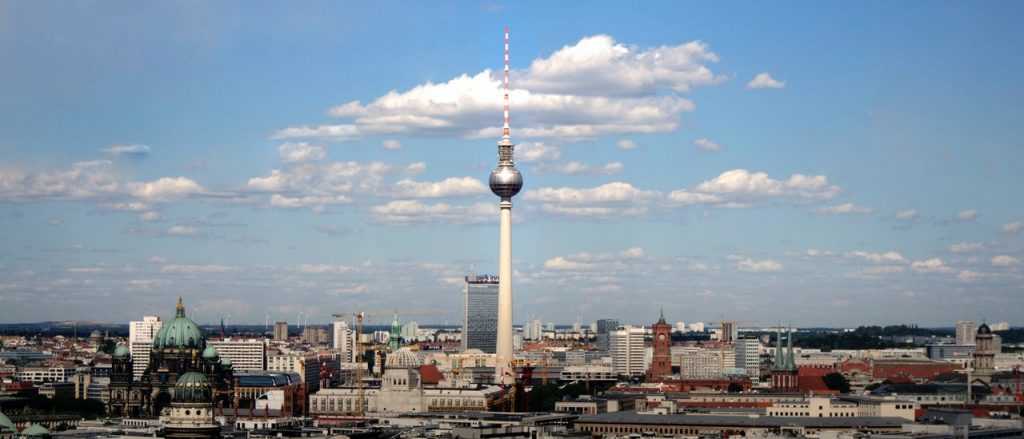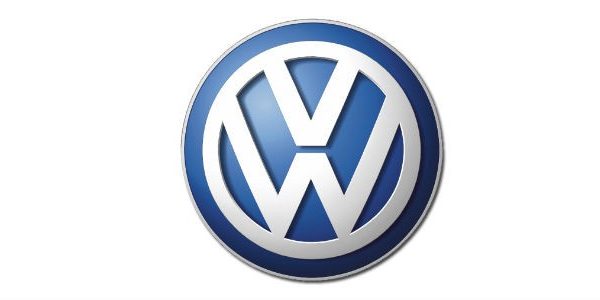The automotive industry in Germany🇩🇪🚗
Industry in Germany plays a key role in European economy – it is the biggest market in the European Union and takes the 4th place in the world (just after the USA, Japan, and China). Energy technology, metallurgy, high-tech or optics come under the most popular branches of industry in German domestic market. Furthermore, clothing trade has been becoming more and more relevant lately – almost everyone knows brands such as Hugo Boss, Puma, Adidas or Orsay. But let’s face the truth – if we think about German product the first thing that mainly comes to our mind is a German motor car, isn’t it? Vehicles come with a promise of high quality and are desirable in many countries all over the world. It is worth to see how this kind of industry has been developing for years and to find out what automobile models are the most famous in Germany nowadays. 1. German automotive industry – one big employer
Almost all German major industries guarantee a cushy job for people from different countries. Liberal policies and good work conditions draw crowds willing to work there. German automotive industry employs about 820,200 workers who make all German auto parts in manufacturing plants. It is over 118,600 new positions in comparison with 2010. The highest level of employment falls under September 2017 – the score is 827,400 employees then.
Let’s keep in mind that hundreds of German factories are located all over the world. This is not only a profitable solution for German car producers but also a chance for local people to find a lucrative job – in fabrication as well as in accounts or management. For example, the biggest plants of Volkswagen are situated in China, Brazil, and the Czech Republic. If you are wondering where prestigious Mercedes is produced in (except Germany of course), you can find it in Hungary and Romania.
Naturally, it is not only about producing cars but also servicing them. There are lots of service centers in many countries, you can even find German Automotive Services in Mobile Alabama city.
 2. Automotive Germany – how did it start?
2. Automotive Germany – how did it start?
German car history thinks back to the 1886 – then German auto pioneer Karl Friedrich Benz came up with an idea of petrol motor-driven vehicle. The march of time let the automotive industry in Germany growing in favorable conditions. Then and there the most popular car concerns were forming.
2.1 BMW
 BMW (Bayerische Motoren Werke) has produced cars since 1918. Beginning of this company was concentrated rather on aviation than on cars, and during the 2nd world war concern was mainly used to produce aircraft engine. But before the war started, BMW had produced some vehicles which stayed as classics in memory of our time – for example, we can point a BMW 328 Mille Miglia as one of the best 1940s German cars. In the space of time concern experienced many finance crisis and merging problems, but the company bounced back and even bought Rover Group in 1994.
BMW (Bayerische Motoren Werke) has produced cars since 1918. Beginning of this company was concentrated rather on aviation than on cars, and during the 2nd world war concern was mainly used to produce aircraft engine. But before the war started, BMW had produced some vehicles which stayed as classics in memory of our time – for example, we can point a BMW 328 Mille Miglia as one of the best 1940s German cars. In the space of time concern experienced many finance crisis and merging problems, but the company bounced back and even bought Rover Group in 1994.
2.2 Opel
 Everybody knows Opel – this company has been a German auto producer since 1899. The 8/25PS model was the first vehicle coming from flow production (in imitation of American cars line production Ford Motor Company). Opel even became a leader in car manufacturing in the 1920s and 1930s in Germany – it held 37,5 % shares in the German automotive industry and resolved into the biggest national car producer. In 2009 was stock split – 27,5 % shares for Russian bank Sbierbank Rossii, 27,5 % shares for Australian Manga, 35 % shares were kept by General Motors, and rest 10 % for company’s workers. Eight years later General Motors sold Opel to French concern Groupe PSA for 2,3 milliard euro.
Everybody knows Opel – this company has been a German auto producer since 1899. The 8/25PS model was the first vehicle coming from flow production (in imitation of American cars line production Ford Motor Company). Opel even became a leader in car manufacturing in the 1920s and 1930s in Germany – it held 37,5 % shares in the German automotive industry and resolved into the biggest national car producer. In 2009 was stock split – 27,5 % shares for Russian bank Sbierbank Rossii, 27,5 % shares for Australian Manga, 35 % shares were kept by General Motors, and rest 10 % for company’s workers. Eight years later General Motors sold Opel to French concern Groupe PSA for 2,3 milliard euro.
2.3 Volkswagen
 Against the background of presented German auto groups, Volkswagen (VW) occurred on the market the latest because in 1931. The first idea of VW car was to produce something quite cheap and for families – that’s how legendary Volkswagen Beetle came into being. These days automobile works are located all over the world – from Europe, Africa to Asia. There are many Volkswagen brands such as Audi, Volkswagen, Seat or Bugatti.
3. Best selling cars in Germany
Against the background of presented German auto groups, Volkswagen (VW) occurred on the market the latest because in 1931. The first idea of VW car was to produce something quite cheap and for families – that’s how legendary Volkswagen Beetle came into being. These days automobile works are located all over the world – from Europe, Africa to Asia. There are many Volkswagen brands such as Audi, Volkswagen, Seat or Bugatti.
3. Best selling cars in Germany
Automotive industries in Germany are named as one of the tops from a global perspective. International magazine Forbes created a ranking of the largest car producers in the world in 2017. German Volkswagen is in third place with a result of 4 234 900 produced cars within a period from January to May. There is more than one German famous car people are willing to buy. Let’s see what models of vehicles are going like hotcakes in Germany and what exactly these cars have, that draw so many attention to themselves.
3.1 The 1 in Germany – Volkswagen Golf
Over 235 935 sold models in 2016 in Germany. If we want to classify Volkswagen Golf, we can assign it for a compact or small family car class. The vehicle goes under the name of Volkswagen Rabbit in USA or Canada and Volkswagen Caribe in Mexico. It has over seven generations and has been produced since 1974. The last several generations are electric CityStromer models which became popular in mainland Europe. Surely, it is appreciated for the powerful German engine. What’s more, the car won lots of awards such as South African Car of the Year in 2010, Car of the Year Japan in 2013-2014 years, Yahoo! Car of the Year in 2015 and Motor Trend Car of the Year in 2015. For every interested in buying the newest Volkswagen Golf – the price of this car starts from 18.075 EURO.
3.2 Volkswagen Passat
This car wins hearts people all over the world. For sure, in the German automotive industry without Passat wouldn’t be the same. It is loved for its dependable operation and driving comfort. The first Volkswagen Passat come onto the market in 1973 and was in two-door and four-door sedan. It is a mid-size or large family car and has been produced in eight generations. That last model won the European Car of the Year award in 2015 and is able to boast about the wide range of advanced driver – assistance systems such as variable ratio steering or semi-automatic parking system. The price for the newest model starts at 32.550 EURO.

3.3 Volkswagen Polo
Available on different variants – from hatchback and sedan to estate models. Proved quality and low mileage – this is what workers of Volkswagen make in Germany. The car is prestigious with regard to entering into different popular events such as Junior World Rally Championship or Russian Touring Car Championship. Even more – Sébastien Ogier won FIA World Rally Championship for Drivers in 2016 driving Volkswagen Polo R WRC. Classic Volkswagen Polo is classified as a supermini car and the latest model costs about 12.975 EURO.
3.4 Mercedes-Benz C-Class
Surely, Mercedes-Benz C-Class is internationally known as a classic part of German car culture. The vehicle has been produced since 1993 and had four generations yet. The latest was launched in 2012 and it is the first car which uses the new Modular Rear Architecture platform. It is a compact executive car stated as luxurious and fancy. The recent model is sporty styled, full of innovative systems such as LED Intelligent Light System, Active Lane Keeping Assist or Active Blind Spot Assist. The price for that good starts from 34.915 EURO.

3.5 Opel Astra
About 65 173 sold cars in 2016 in Germany. In Australia and New Zealand you can hear the name, Holden Astra, in the United Kingdom it goes under Vauxhall Astra and in the United States or Canada as a Saturn Astra. It has been produced since 1991, and we can pick five generations of this model. It is compact and small family car class, but there are more variants of Opel Astra, for example, Astra Xtreme or Astra G series Coupe which was used in DTM racing car series. You can buy the newest model for 17.995 EURO. 4. Germany for a car like Swiss for a clock?
The automotive industry in Germany in 2017 earned about 422.8 billion EURO. In comparison with 2016, it states a new record – over than 4 percent more. Export gained ground with a result of 6 percent more than a year before and a number of domestic customers also increased in the number of 151.0 billion EURO. Presented data let us summarise automotive industry in Germany in one sentence – this is still growing branch of business which can use innovation in a practical way, satisfy consumers’ wants and follow global trends, and even set them.